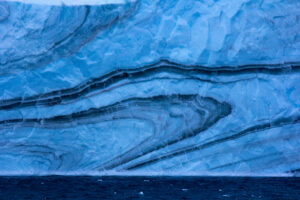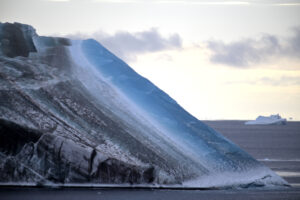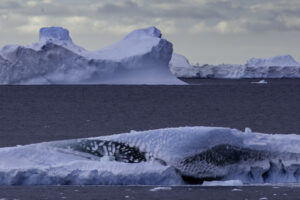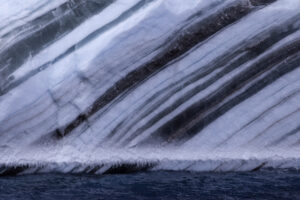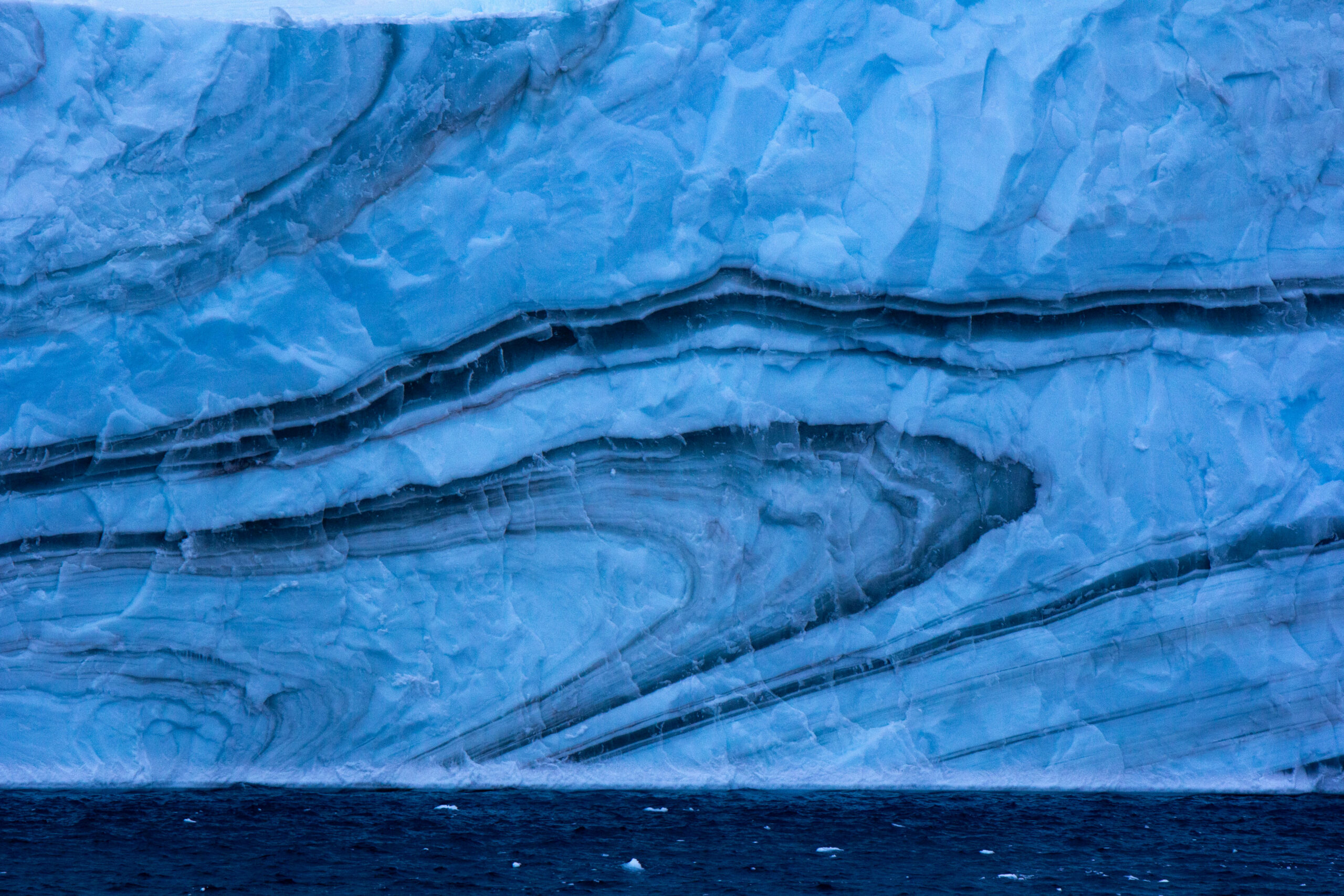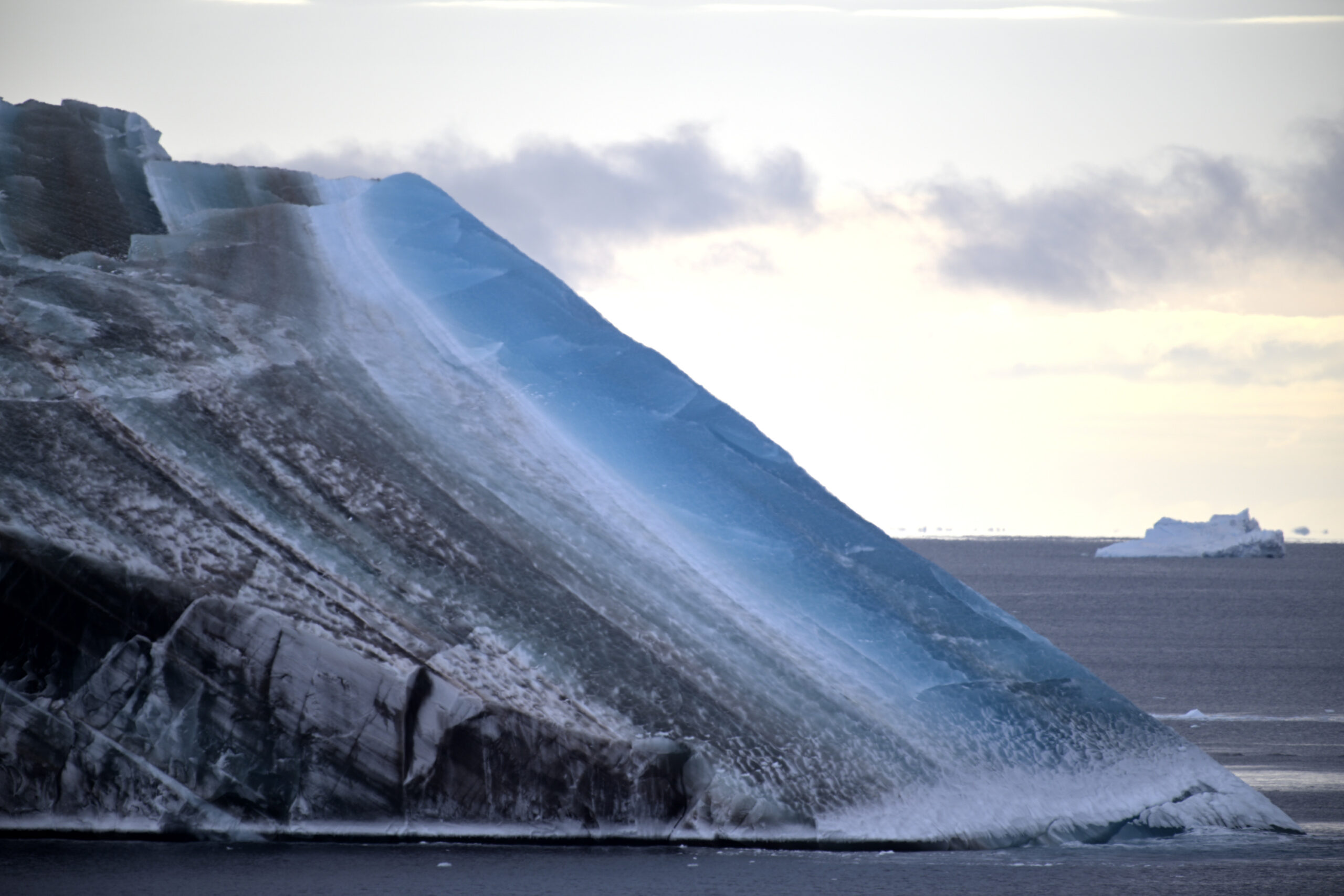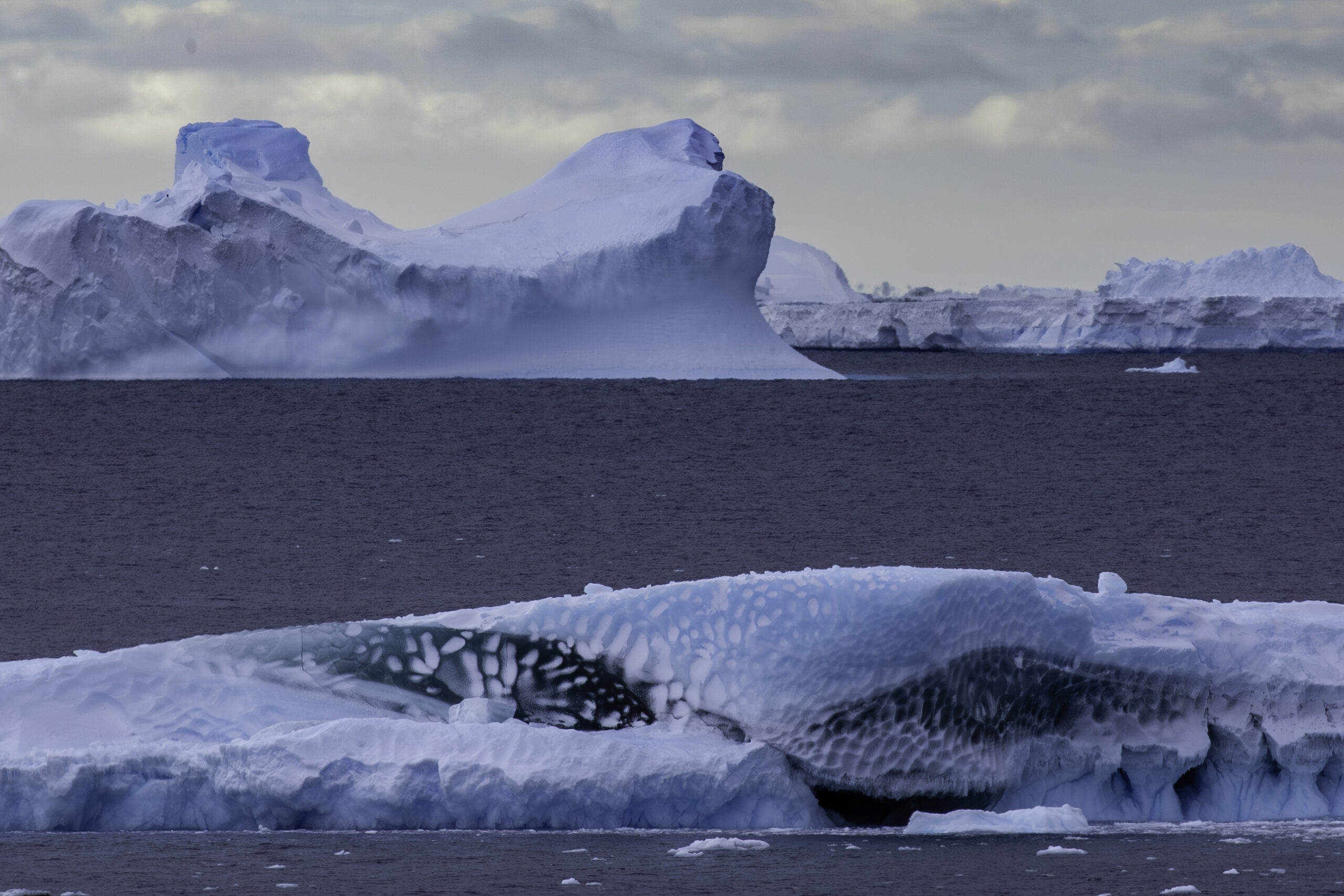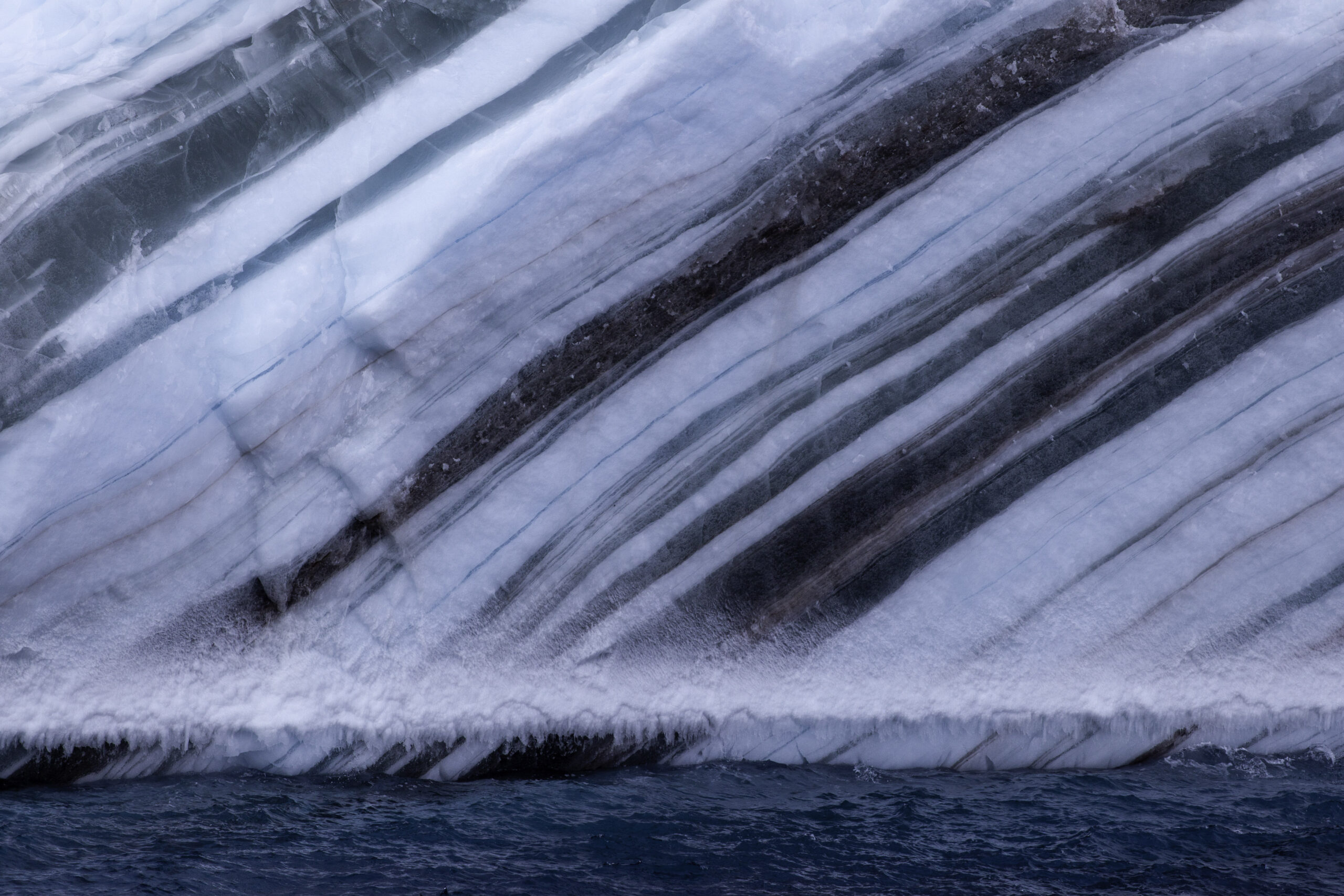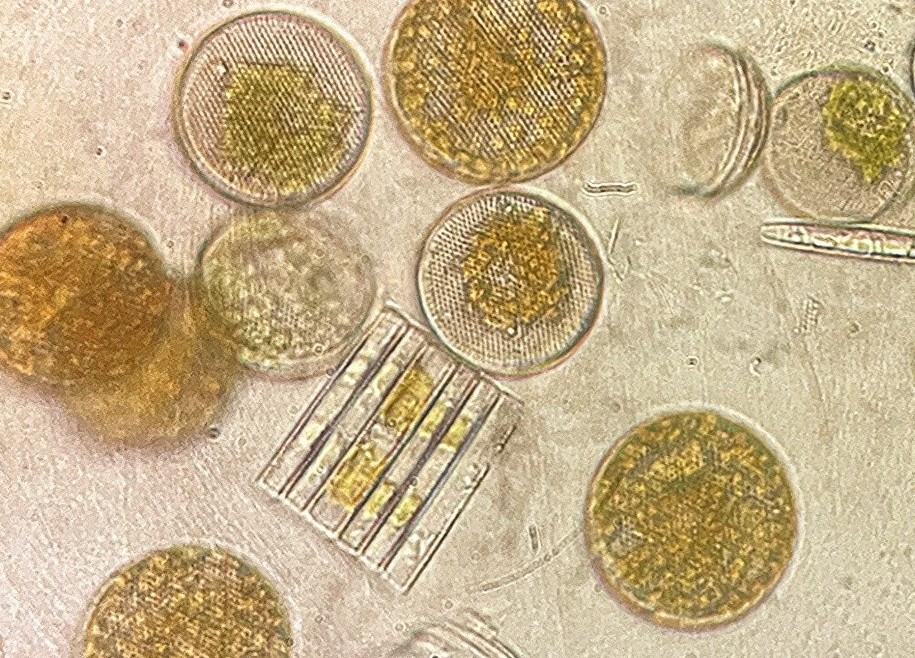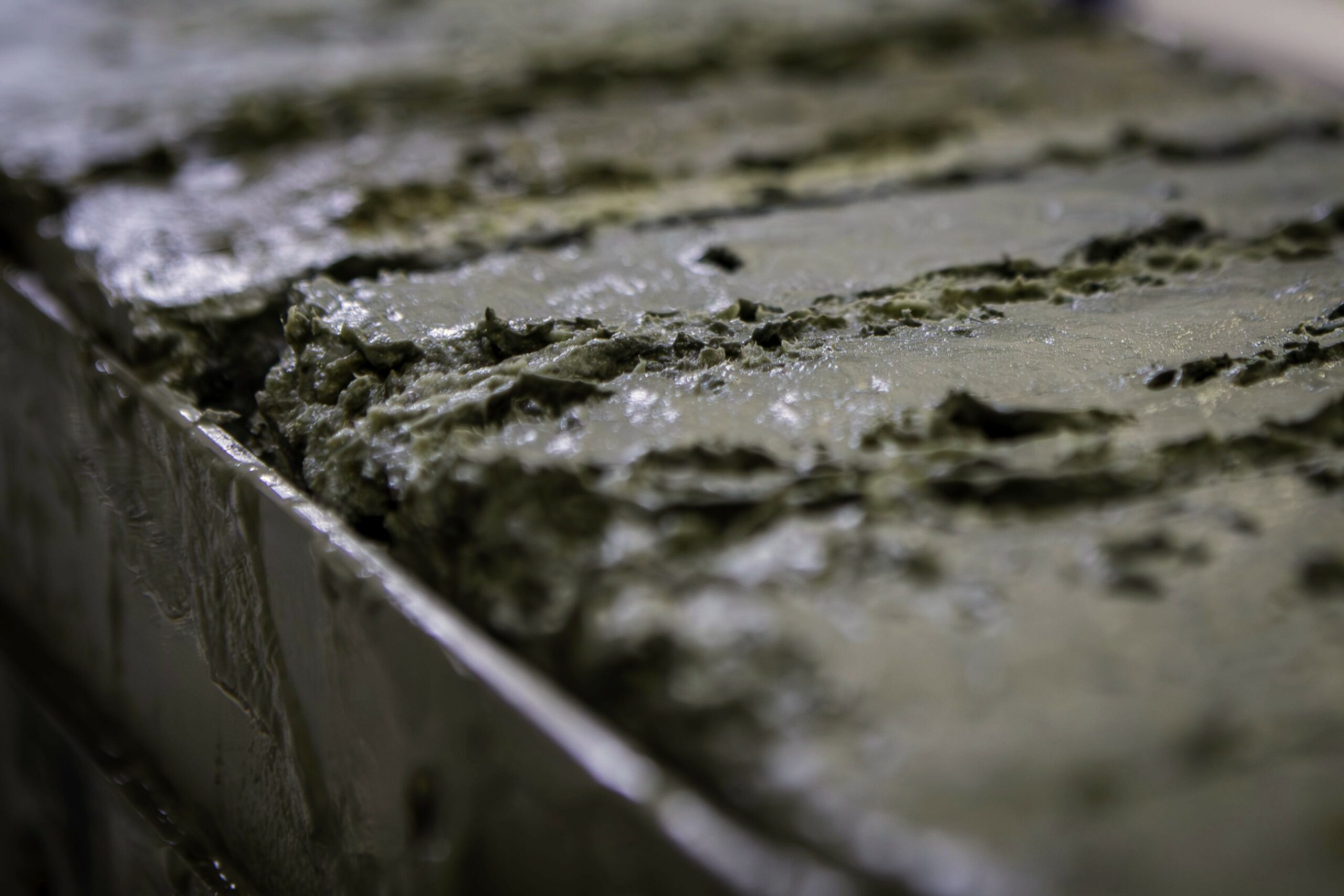Mysteries of colourful icebergs
By Kaihe Yamazaki
Antarctica’s icebergs are famous for their brilliant whites and blues from glacier ice (compacted snow turns blue as air bubbles are expelled), but a few stand out in startling colours like green, brown, black and even marbled, as we just witnessed at the Denman Glacier ice front a few days ago. As a matter of course, those ‘coloured icebergs’ have grown the imagination of explorers and scientists for over a century. Let’s explore historical accounts of coloured icebergs and what we know (or have speculated) about how they could owe their unusual colours to formation processes.
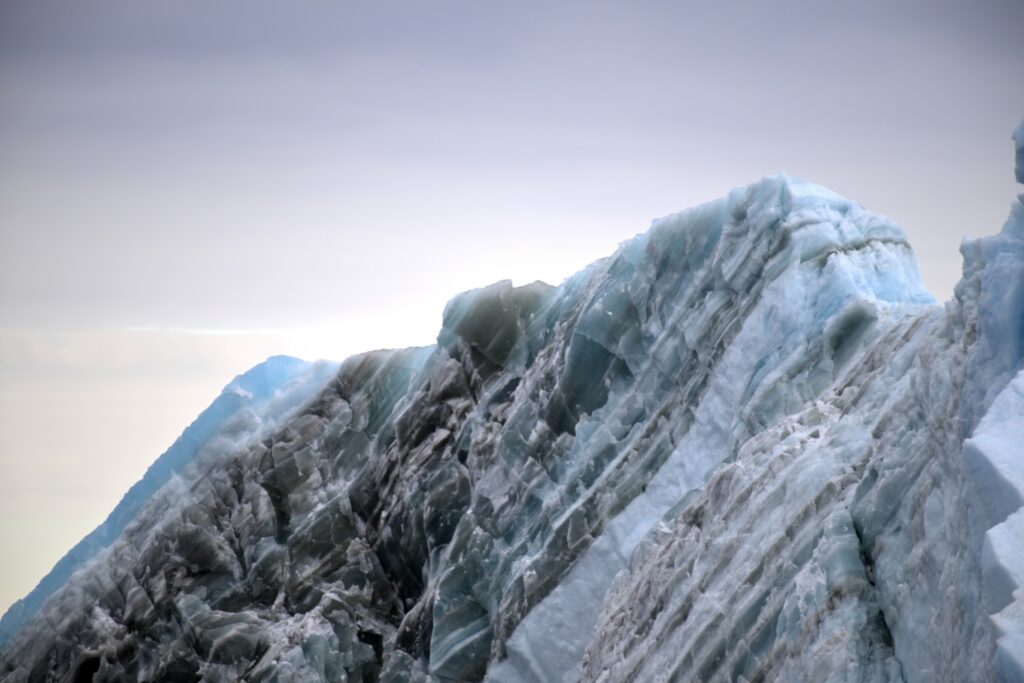
‘Jade-green icebergs’ might be the most storied of the coloured bergs. Their formation begins deep beneath an Antarctic ice shelf – a floating extension of a land glacier. As extremely cold seawater upwells under an ice shelf, it can supercool and freeze onto the shelf’s underside, forming a layer of new ice called marine ice. Early Antarctic explorers and sailors began reporting oddly hued icebergs in the early 20th century. These eyewitness accounts describe icebergs with lustrous green tones, distinct from the usual white or blue. For example, in 1798 Coleridge’s poem The Rime of the Ancient Mariner, an Antarctic sailor encounters “ice mast high… as green as emerald.” Throughout the 1900s, expedition logs and research journals continued to note sightings of vividly coloured ice blocks, establishing this as a persistent Antarctic curiosity.
Scientists were long puzzled by the cause of such jade bergs. Early hypotheses from the mid-20th century onward proposed that marine organisms or organic matter might be responsible. A 1993 analysis of a green iceberg found elevated marine organic content, leading researchers to suggest that dead phytoplankton (dissolved organic carbon) imparted the green hue, however, with no consensus on their origin. It wasn’t until recent decades that systematic scientific studies tackled the question. In 1988, glaciologist Stephen Warren sampled a green iceberg near the Amery Ice Shelf and was struck by the exceptional clarity and lack of air bubbles in its green ice. This and subsequent analyses set the stage for a new explanation. Finally, in 2019, Warren and colleagues published their findings in JGR-Oceans: the green coloration comes from iron-rich minerals frozen into the ice, which are usually red or yellow particles, shifting the ice colour to green.
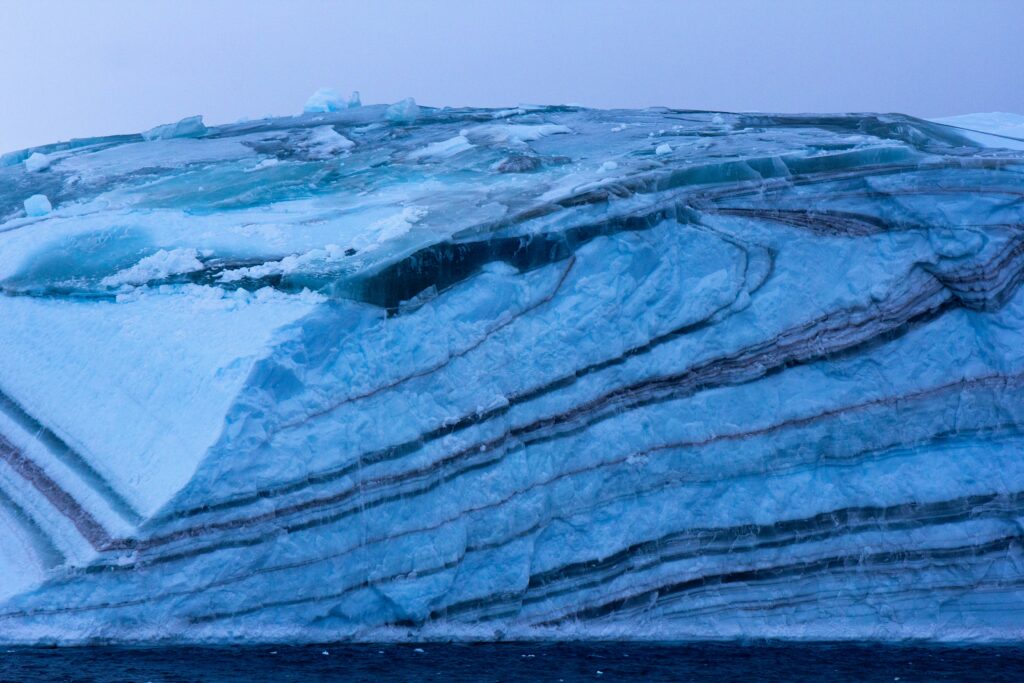
‘Black icebergs’ are another striking variant, noting they have yet to be systematically investigated unlike green icebergs. Black icebergs might get their dark appearance from dirt and rock. As glaciers flow toward the sea, they grind over bedrock and pick up sediments. This debris can become embedded in the ice. When the glacier calves, the iceberg may carry dense ribbons or layers of rocky material. These sediment inclusions can colour parts of the iceberg deep brown, grey, or black. Volcanic ash may also have a similar effect if it settles on ice and gets frozen in. Strong ocean mixing may cause benthic sediments to mix with seawater and be incorporated into basal marine ice.
In addition, there could be an intriguing optical effect. In certain cases, an iceberg can appear black because the ice itself is exceptionally pure and clear. Ice that forms from seawater under high pressure can be free of air bubbles, making it optically transparent. Stephen Warren notes that shiny black icebergs are made of defect-free marine ice, and there is nothing to scatter the light, so they appear black or glassy.
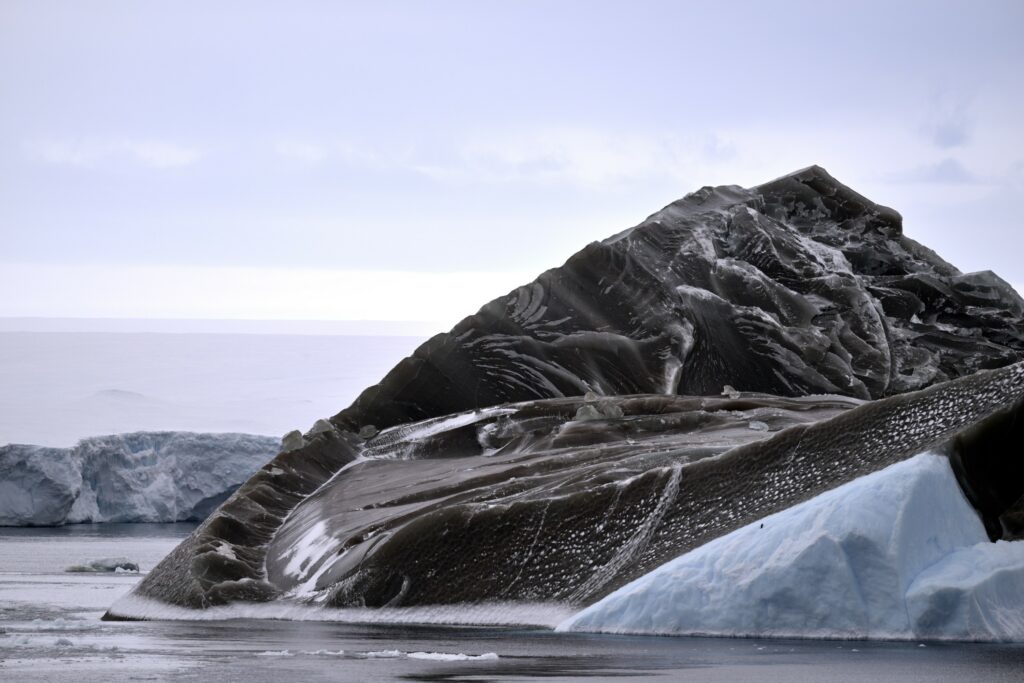
Some of the most spectacular icebergs have multiple-coloured bands. It has been considered that these bergs form when an iceberg contains distinct layers of ice formed under different conditions. For example, a glacier might have blue bands of refrozen meltwater, and an attached basal marine ice layer could add a green band, while layers of silty ice add brown or black bands. As the iceberg erodes, these layers can angle and intermix, creating a marbled appearance. Some stripes might be formed by seawater or fresh water freezing up into crevasses.
Once a coloured iceberg has calved from glacier, it does not only advertise the ice-ocean-topography interaction at their birth, but it also continues to interact with the environment as it drifts. The coloured ice is likely enriched in iron, an essential nutrient for phytoplankton in the Southern Ocean. It is speculated that these icebergs could flourish nutrients to the ocean far from the continent, linking Antarctic glaciers to the marine food web.
I thank Dr. Benoit Legresy for checking my writing and crews of RSV Nuyina for safely conducting the Denman Marine Voyage 2025.
—
References:
Warren, S. G., Roesler, C. S., Morgan, V. I., Brandt, R. E., Goodwin, I. D., & Allison, I. (1993). Green icebergs formed by freezing of organic-rich seawater to the base of Antarctic ice shelves. Journal of Geophysical Research: Oceans, 98(C4), 6921-6928.
Warren, S. G., Roesler, C. S., Brandt, R. E., & Curran, M. (2019). Green icebergs revisited. Journal of Geophysical Research: Oceans, 124(2), 925-938.
https://www.antarctica.gov.au/news/2019/new-clues-in-jade-iceberg-mystery
*Dr Kaihe Yamazaki (UTAS) is part of the oceanography team for ACEAS on the Denman Marine Voyage, working with AAPP scientists.
